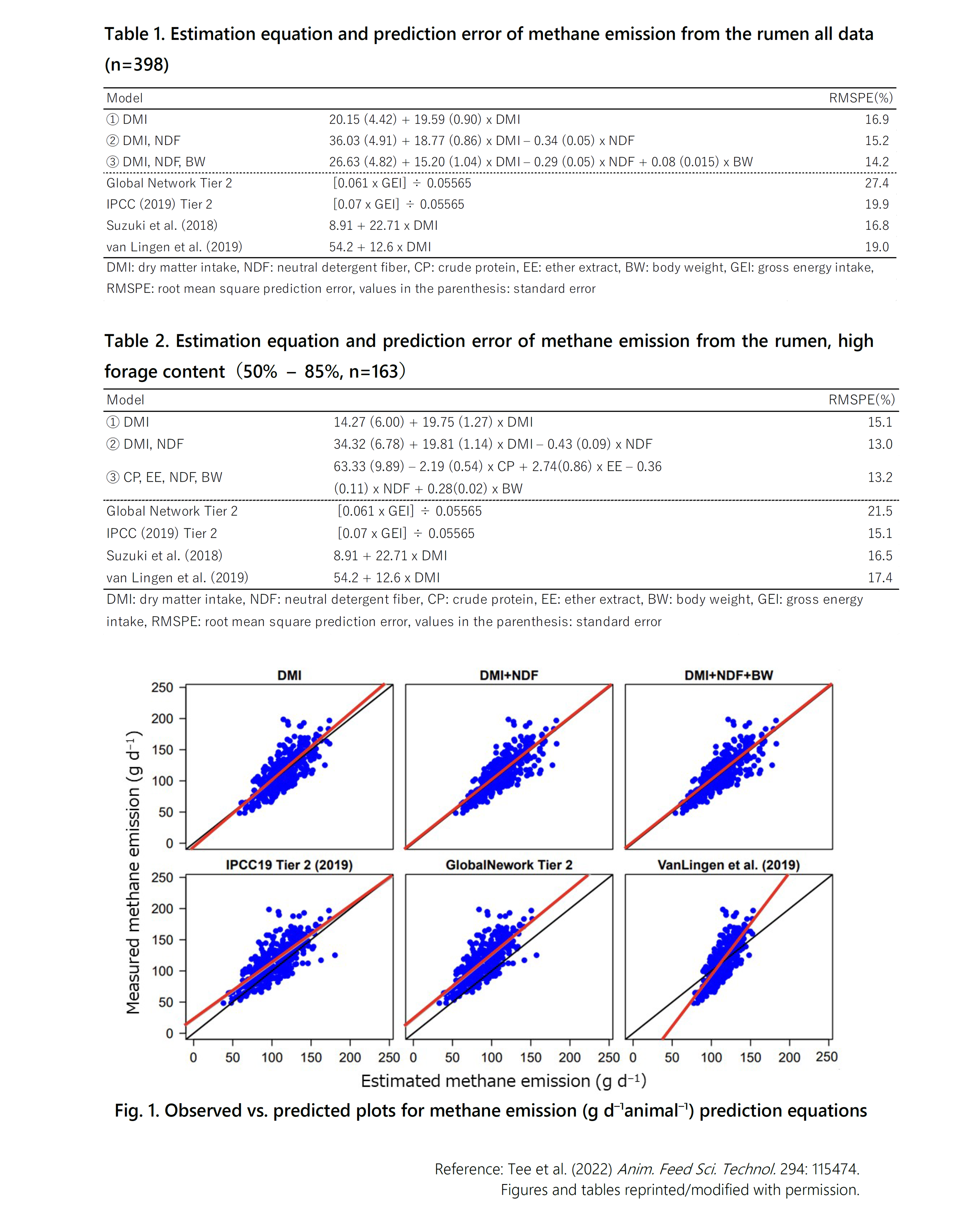Enteric methane emission models for beef cattle in Southeast Asia
Description
Ruminants are one of the major sources of greenhouse gas emissions. Therefore, a precise estimation of this category is needed. Since direct precise measurement from each cattle is labor-consuming and requires a specific expensive measurement facility, an alternative approach that enables indirect estimation with available data, such as the feed intake or its quality, is needed. Currently, methane emissions from ruminants in each country are estimated using the methane conversion value (Ym), which utilizes the gross energy intake (GEI) data. However, the current model is composed of datasets from Western cattle breeds and feed composition, which is very different from the situation in Southeast Asian countries, and it makes the precision of the estimation poor. Therefore, a better estimation equation model that reflects the specific production condition in Southeast Asian countries is needed. Here, we revised the current methane emission equation model by collecting the available methane emission data and feed intake or its composition data across Southeast Asian countries.
We conducted a survey on methane emission data and feed intake or composition data from 8 Southeast Asian countries as part of the GRA-LRG global network project, and found that only 3 countries (Thailand, Vietnam, and Indonesia) possess methane emission data using the standard chamber method. After quality filtering, 398 data points were used for developing the methane emission estimation equation model. First, we developed the model based on dry matter intake data (Table 1, ①). The RMSPE value is lower compared to current IPCC Tier 2 (2019) or Global Network Tier 2 equation models, indicating that our model has higher precision compared to these existing models (Fig. 1). The RMSPE value could be further lowered by including NDF or body weight as additional parameters (Table 1, ②③, Fig. 1). Furthermore, the dataset was divided into 3 categories according to the roughage/concentrate ratio (all forage: 119, high forage: 163, low forage: 116), and they were used for developing higher precision equation models (Table 2). The RMSPE value was lowest for the high forage (50%–85%) category, which is the most widespread feed composition in the region.
These estimation equations can be utilized as a better and alternative approach compared to the existing estimation equations for inventory data development in each country. However, we need to keep in mind that the dataset used for the methane emission estimation equation model is derived from only a few countries (Thailand, Vietnam, and Indonesia).
Figure, table
- Research project
- Program name
- Term of research
-
FY2019–2021
- Responsible researcher
-
Maeda Koki ( Crop, Livestock and Environment Division )
Suzuki Tomoyuki ( Institute of Livestock and Grassland Science, NARO )
ORCID ID0000-0002-5313-7647KAKEN Researcher No.: 70391175Tee Tuan Poy ( Universiti Putra Malaysia )
ORCID ID0000-0003-4274-9178Liang Juan Boo ( Universiti Putra Malaysia )
ORCID ID0000-0001-6024-0856 - ほか
- Publication, etc.
-
Tee et al. (2022) Anim. Feed Sci. Technol. 294: 115474.https://doi.org/10.1016/j.anifeedsci.2022.115474
- Japanese PDF
-
2022_A03_ja.pdf1.36 MB
- English PDF
-
2022_A03_en.pdf882.59 KB
* Affiliation at the time of implementation of the study.

